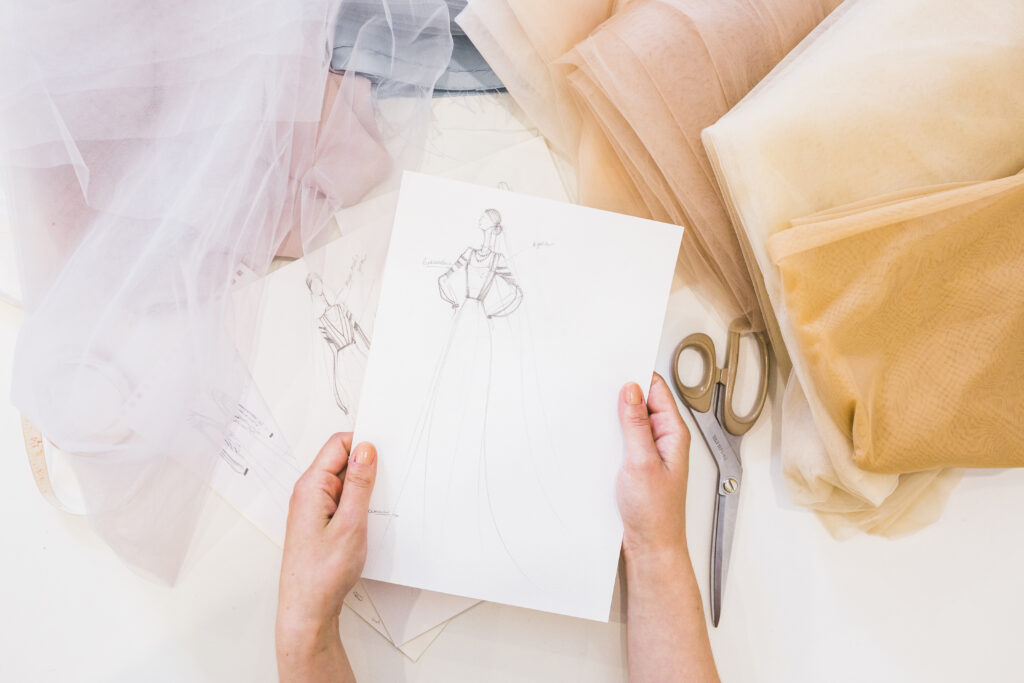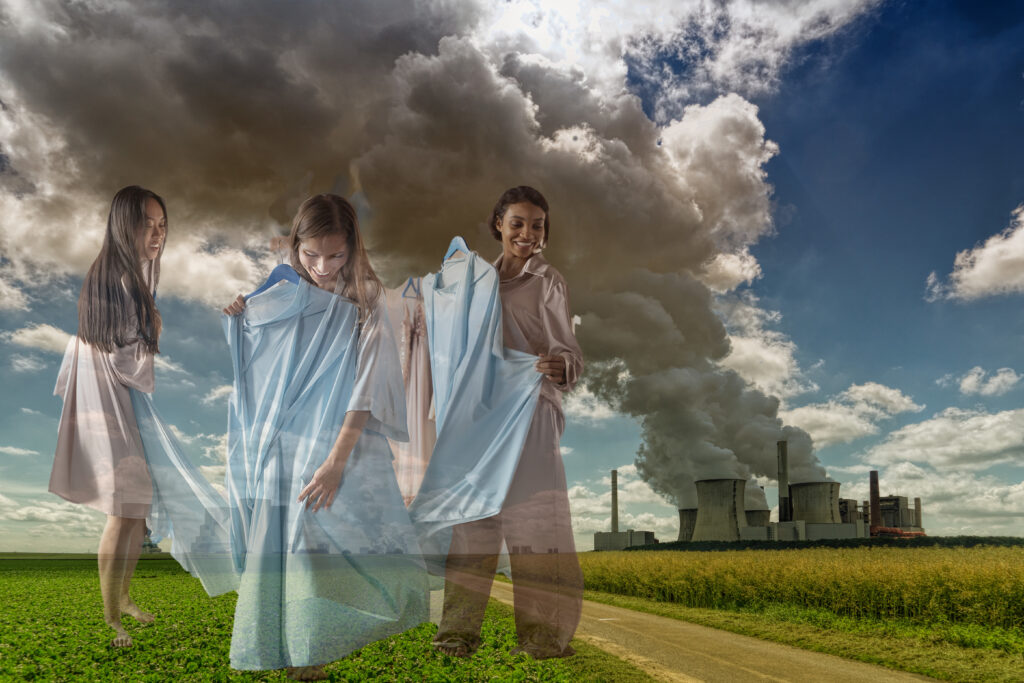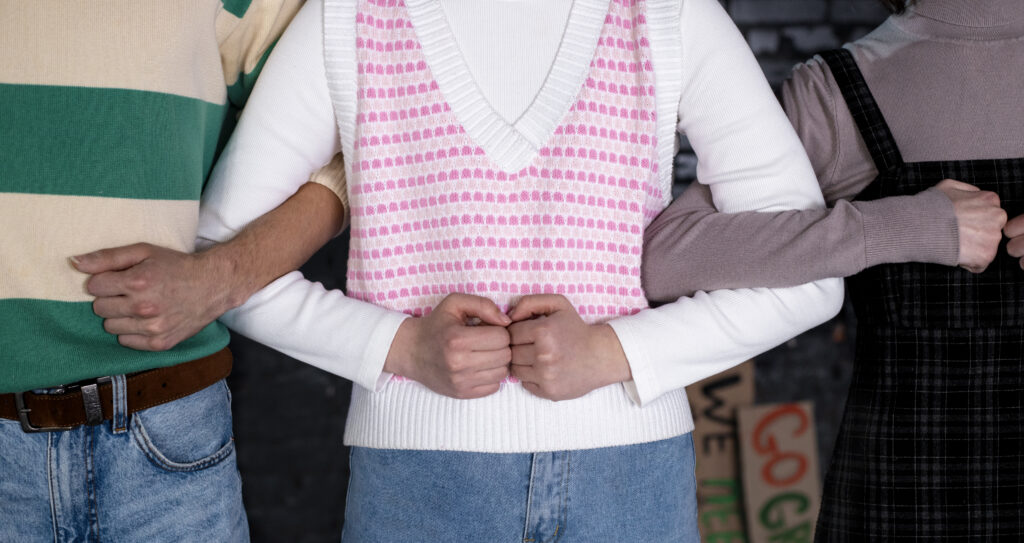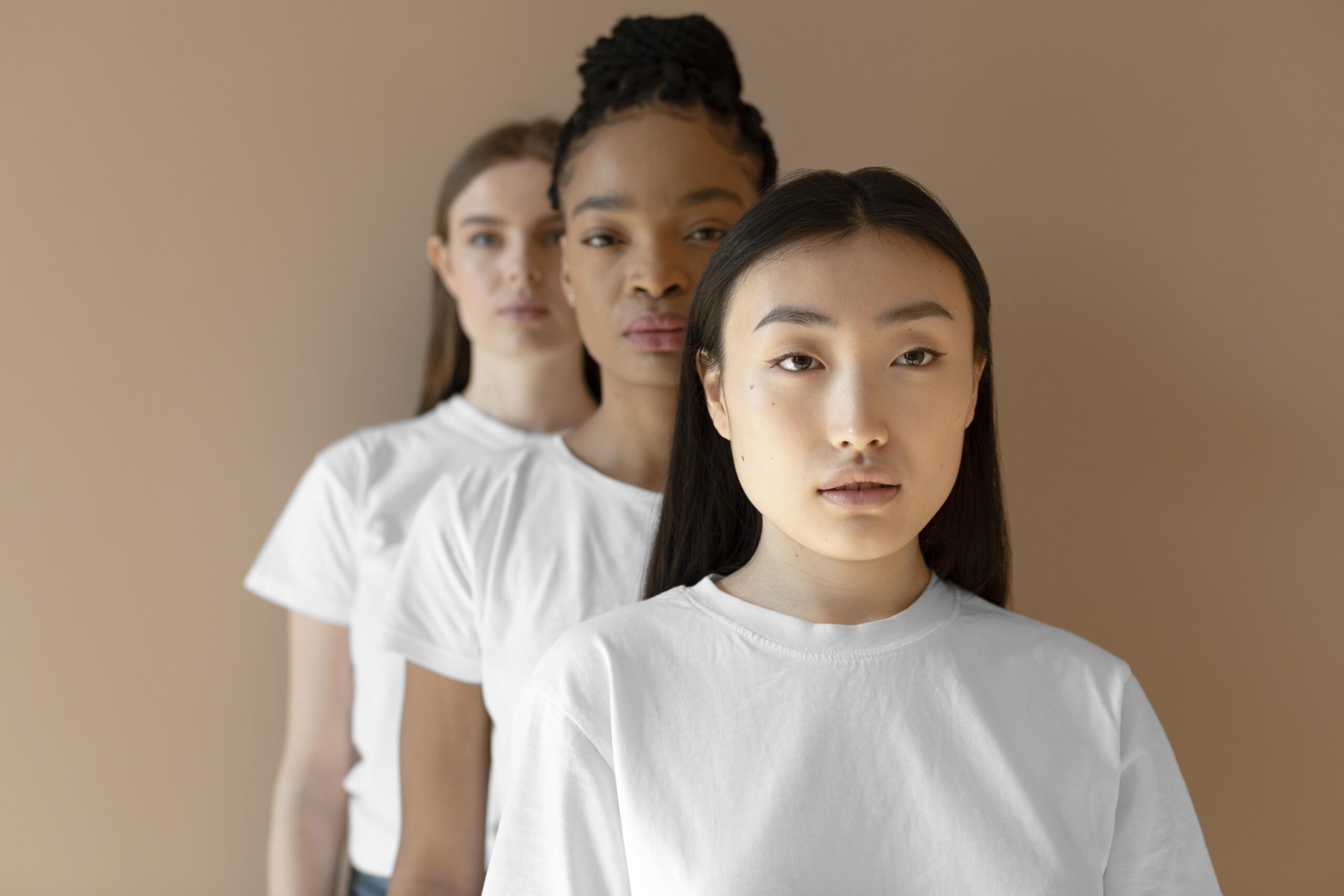How many threads does the shirt I am wearing have?
How many colors?
How many fabrics?
What designs?
How many hands have worked on it?
How long did they take?
How much does it cost?
It would seem a simple matter of numbers.
Yes, the numbers in the fashion industry are huge, as are the number of people who work there. There are about 75 million people employed in this industry. We are talking about a growing market that expects to reach a turnover of approximately 80,000 million dollars in 2023 (Source: fashionunited.com). This data is valid for China and the United States, followed by Europe with France and Italy, and then the United Kingdom and Japan.
Great.
Sounds like an idyllic scenario when it comes to revenue and style. But what if we talk about the working conditions in which most of the people involved work every day?
It is important to remember that this is the second most polluting industry in the world after oil. Furthermore, we must not forget that the fashion industry is also an industry that has low considerations for human rights.
It is worrying and surprising to recognize that on the doorsteps of 2023 profit forgets and still tramples on the human rights of many. The list of abuses against workers in China and Bangladesh, or in India, Cambodia, Bulgaria, and Turkey that the international community seeks to oppose is long.
The soul of those colors and fabrics that we choose to wear every day seems to have a dark connotation. They speak of so much suffering, especially in that part of the world where it seems that we can continue to exploit human beings with a common and normalized indifference.

An evolution that is similar to regression.
It was sewn by hand, and the techniques and knowledge were passed on from mother to daughter, like an important intangible richness that gave power to all those women who expressed their art and skills by producing clothes. Those unique dresses that required dedication, care, and passion were inherited and never thrown away, they were mended, giving them even more value.
A marvel that was felt when they were worn.
It was fashion. It was the root of what founded this colossal industry that has transformed over time to adapt to modern society.
Currently, we have endless options available that we can buy in a couple of minutes and at very low prices compared to the past. It’s called fast fashion.

This is a monster who seems not to have heard of the right to health, the right to a minimum wage commensurate with the cost of living, and the creative evolution of human resources.
In the 1960s, the United States produced 96% of the clothes it wore. Today it produces only 3%. The rest is mainly processed in developing countries.
It almost looks exotic.
Little is known and the women who model the soul of these garments are unattributed. We live a long way from those factories in ruins. Every day, women, men, and many minors end up with 15 hours of hard work for a salary that does not reach the minimum required. We’re talking a couple of dollars a day in extremely unsanitary working conditions.

Almost 10 years have passed since the catastrophe of Rana Plaza. The event brought to light a long-hidden or ignored problem. The collapse of that building caused more than 1,100 deaths and more than 2,500 injuries. Today there are many more victims in many other factories and not only in Bangladesh. This is one of many examples where the fashion industry and human rights do not go hand in hand.
In the 2015 documentary “The true cost”, other catastrophes are shown, and they seem to have no end.
The global market with global human rights issues.
The pressure of prices, which tend to be ever lower, affects world production. A product is made where labor is cheaper than in the country where it is sold. At the end of the production chain, the consumer decides to buy cheap with the advantage of being able to replace the purchased item as soon as possible. At the beginning of this chain is the exploitation of the labor necessary for the production of the good in question.
It is legitimate to denounce, in addition to the exploitation of human resources, the contamination of immense lands destined for the intensive production of cotton plants, genetically modified to resist the use of pesticides and chemical fertilizers which favor their growth. The dyes, chemicals, and powders produced in production environments are also the cause of important diseases related to the central nervous system, which kill children in entire communities poor in resources to heal themselves.
It is a global market as global as the problem it brings with it.
The connection between the fashion industry and human rights on a global stage may seem alien to everyday life. Catastrophe is not far from our closet, and the clothes we wear have their soul clouded even more due to our individual decisions.
There is also little time gap. In 2020, the British company Boohoo became the protagonist of the scandal dubbed the “sweatshop”, precisely because, as the term describes, the press denounced the terrible condition of the employed, victims of modern slavery due to inadequate wages and conditions which do not comply with established safety standards. While the company has made an effort to improve its practices over the past two years, no improvement is perceived. Surprisingly, the events didn’t take place out of sight of prying eyes and ears, but under everyone’s noses in Leicester, UK.

In action.
Internationally, there are no mandatory standards covering all aspects of social responsibility. This regulatory breach is, therefore, a major problem for the defense of human and labor rights around the world. In 2011, the United Nations Human Rights Council adopted Guiding Principles on Business and Human Rights based on three pillars: the government’s obligation to protect individuals from human rights abuses; the ethical responsibility of companies in respect of human rights; the responsibility of states and businesses to provide effective remedies. Based on soft law (therefore non-binding) principles, all this is not enough. Even if companies are obliged to be ethically responsible, this concept is not mandatory and much less punishable.
A recent proposal from the European Commission calls for strengthening the sustainability of the fashion industry (An interesting initiative is the one against greenwashing), and especially the reduction of labor outsourcing. Behind this proposal are the many requests from NGOs that have been mobilizing for some time to restore the world of the fashion industry, and give back dignity to people who have been deprived of their human rights.
The common responsibility is to raise awareness of conscious buying. Second-hand brands, such as Vinted (online) and Humana (in Spanish territory), sell rare clothes at moderate prices.
Clothing is a form of communication that we wear constantly.
We must show and give light to the soul of those garments that fill our homes, which are our second skin, and the rights of those who weave those precious threads cannot be trampled on.






